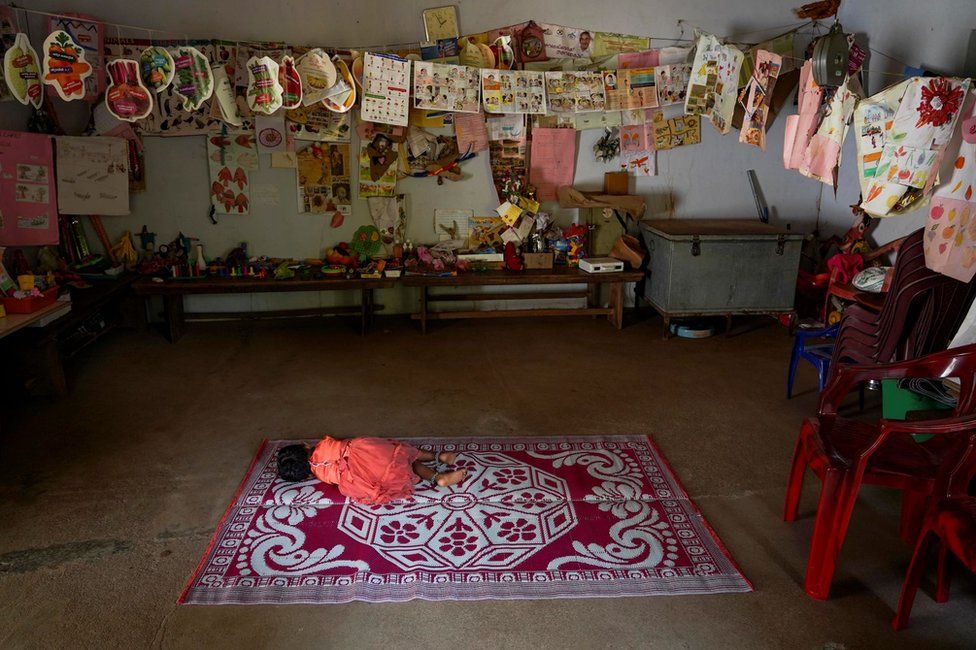

As India overtakes China as the world’s most populous nation, there is a crisis of population in parts of the country where fertility has fallen below replacement levels and migration has left behind ghost towns inhabited by the elderly. The BBC’s Soutik Biswas travels to Kumbanad, a town in Kerala state which is grappling with the consequences of an ageing society.
For years, schools in a drowsy town in Kerala have been facing an unusual problem: students are scarce and teachers have to go out looking for them. They also have to pay from their pockets to bring students to the school.
A 150-year-old government upper primary school – which educates students up to the age of 14 – in Kumbanad has 50 students on its rolls, down from about 700 until the late 1980s. Most of them are from poor and underprivileged families who live at the edge of the town. With only seven students, grade seven is the largest class. In 2016, the class had only one student.
Getting enough students to the school is a challenge. Each of its eight teachers fork out 2,800 rupees ($34; £28) every month to pay for auto rickshaws (tuk-tuks) ferrying students from home to school and back. They also go door-to-door looking for pupils. Even the few private schools in the area are sending out teachers to look for students – the biggest one has barely 70 students.
On a muggy afternoon recently at the upper primary school, you could barely hear the hum of lessons and hubbub of squeals that form the soundscape of a busy schoolhouse. Instead, teachers taught a few children in dark, quiet classrooms. Outside, in the sun-baked courtyard ringing the building, a few students wandered around desultorily.

“What can we do? There are no children in this town. I mean, there are barely any people living here,” said Jayadevi R, the principal, wryly.
She is right. Kumbanad lies at the heart of Kerala’s Pathanamthitta district where the population is declining and ageing. This in a country where 47% of people are below the age of 25; and two-thirds were born after India liberalised its economy in the early 1990s.
Kumbanad and half-a-dozen verdant villages around it are home to some 25,000 people. Some 15% of the 11,118 homes here are locked up because the owners have migrated or live with their children abroad, says Asha CJ, the local village council chief. There are 20 schools, but very few students.
One hospital, a state-run clinic, more than 30 diagnostic centres and three old-age homes are pointers to its greying population. More than two dozen banks – including eight branches within less than half a kilometre – vie for remittances from townspeople who live and work all over the world. Around 10% of the $100bn in remittances that India mopped up from Indians living abroad last year came to Kerala.
Kerala – along with neighbouring Tamil Nadu – is some sort of an outlier in teeming India: the decadal rise in population here between 2001 and 2011 – when the last census was conducted – was lowest (4.9%) among states. A new-born in Kerala can expect to live for 75 years against the national average of 69.
Fertility rates in the state have dipped below replacement levels – 1.7 to 1.9 births per woman – for at least 30 years now. Smaller families ensure that children are educated well. This leads to the young migrating quickly within and outside the country for opportunities, leaving their parents at home.
“Education makes children aspire for better jobs and lives, and they migrate,” said KS James of the Mumbai-based International Institute for Population Sciences.
“Their native places are then populated by their elderly parents, many of them living alone.”


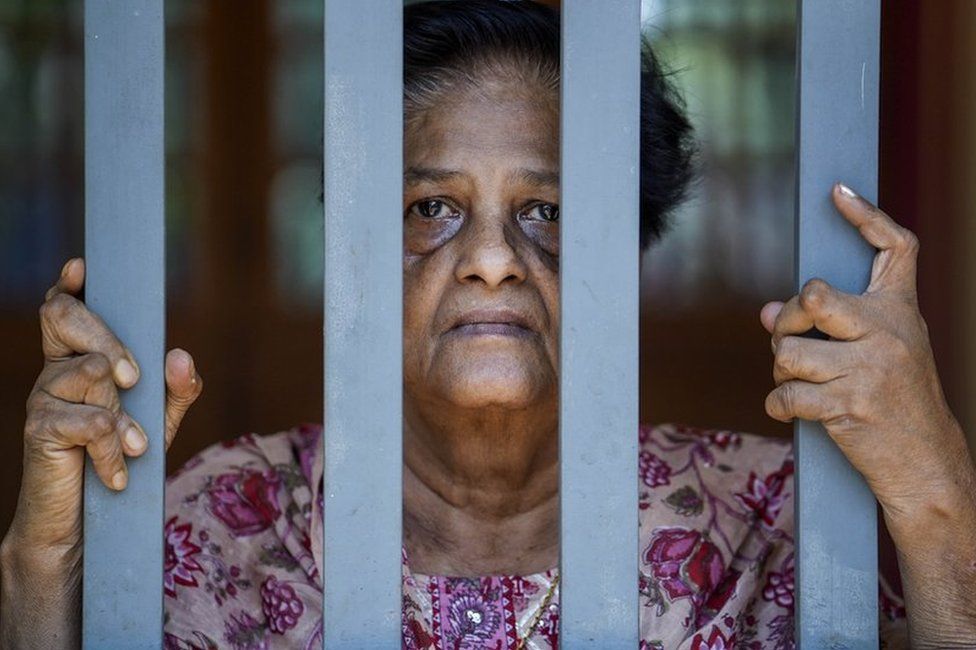
Behind the tall metal security gates of her two-storey red tiled home in Kumbaud, Annamma Jacob, 74, has been living alone for as long as she can remember.
Her husband, a mechanical engineer with a state-owned oil company, passed away in the early 1980s. Her 50-year-old son has been living and working in Abu Dhabi for more than two decades. A daughter lives a few miles away, but her husband has been working as a software engineer in Dubai for three decades.
Her next-door neighbours are absent: one locked up her house and took her parents to Bahrain, where she worked as a nurse; the other moved to Dubai and rented their place to an elderly couple.
The neighbourhood is a picture of desolation. Amidst a lush landscape of tapioca, banana, and teak trees, handsome houses with expansive yards stand vacant, their driveways scattered with dried leaves and cars covered in dust. CCTV cameras have taken the place of guard dogs.
In vivid contrast to the cacophony of India’s chaotic and bustling towns, swathes of Kumbanad are surreally deserted and half-frozen in time. It is a town abandoned by many of its inhabitants but it is not languishing in ruins. The deserted houses are painted regularly, almost like they expect people any day. Except, they hardly come.
“It is a very lonely life. I am also not keeping good health,” Ms Jacob said.
Despite her heart disease and arthritis, Ms Jacob has travelled abroad to spend time with her son and grandchildren, and has vacationed in Jordan, Abu Dhabi, Dubai and Israel with her children.
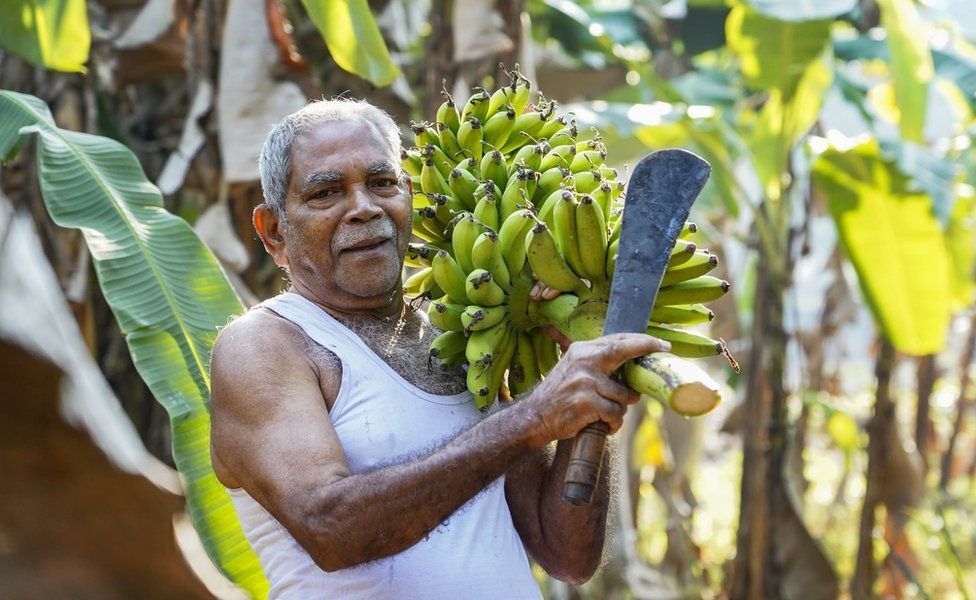
The things strewn around in her carpeted living room tell you something about her links with the world: imported paracetamol tablets, pistachios and cashew nuts, yellow paper flowers stuffed in China-made vases; and a bottle of imported body wash.
I asked her why she built a sprawling 12-room house only to live alone. “Everyone builds big houses here,” she smiled. “It’s about status.”
She spends a lot of time in her backyard farm where she grows tapioca, bananas, ginger, yam and jackfruit. At other times, she meditates and reads newspapers. She has a dog called Diana in a kennel outside.
“Some days, I only talk to Diana. She understands me.”
At her age and with her failing health, it is exhausting to work on the farm. Ms Jacob said she cannot afford a farm hand. A shortage of labour has meant steep work wages for the few who look for work. A daily labourer charges a thousand rupees for a six-hour day looking after the farm. Even Ms Asha’s village council is not able to find and afford people to digitise its records.
A few lanes away, Chacko Mammen, who suffers from heart disease and diabetes, works in his little farm for four hours every day, growing bananas. The 64-year-old worked in Oman for three decades as a salesperson before returning home. He shut a small business after six years because he did not find enough people to work for him. Now, after a lot of effort, he grows and sells about 10kg of bananas every day from his farm. “I just cannot afford a worker,” he said.
Shoring up the work force in an ageing society is always difficult. Even migration of workers from other states doesn’t always work, sometimes because of a distrust of outsiders. Ms Jacob said she did not prefer hiring a migrant.
“I live alone. What if they kill me?” she said.


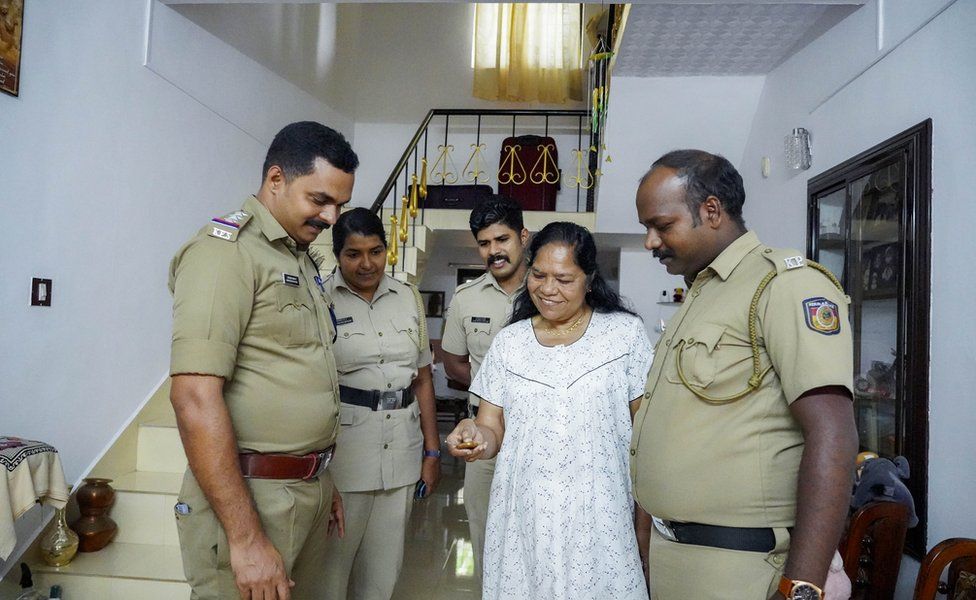
In this mellow town of elderly people and shuttered homes, there is very little crime.
The police said thefts are rare because people don’t keep much money and valuables at home. They don’t remember the last time a murder took place here.
“It’s all very peaceful. We only get complaints about cheating. Old people being cheated by their relatives or domestic helps who forge their signatures and withdraw their money from banks,” said Sajeesh Kumar V, the chief inspector of the local police station.
A year ago, a relative of an elderly resident embezzled nearly 10m rupees by faking her signature. Last year the police arrested four promoters of a private financial firm which set up shop in the town and promised steep returns on deposits. When it began to default in what looked like a ponzi scheme, some 500 local depositors went to the police.
“That was a big crime for this area,” said Mr Kumar. “Otherwise we are mainly dealing with minor fights among residents – about some noise, or rubbish being dumped outside their home, someone’s wild tree branch encroaching on a neighbour’s farm. Those sort of things.”
The lack of crime means that the police spends most of its time looking after the old. They regularly check in on 160 single and ailing people; and have given away mobile alarms in some of their homes so they can alert neighbours during emergencies. In 2020, the police broke down the door of a house when no one answered the doorbell and found the resident, an elderly woman, lying on the floor.
“We took her to the hospital, where she recovered, One of our jobs is also moving residents to old-age homes. We check on old people, we take them to doctors,” said Mr Kumar.


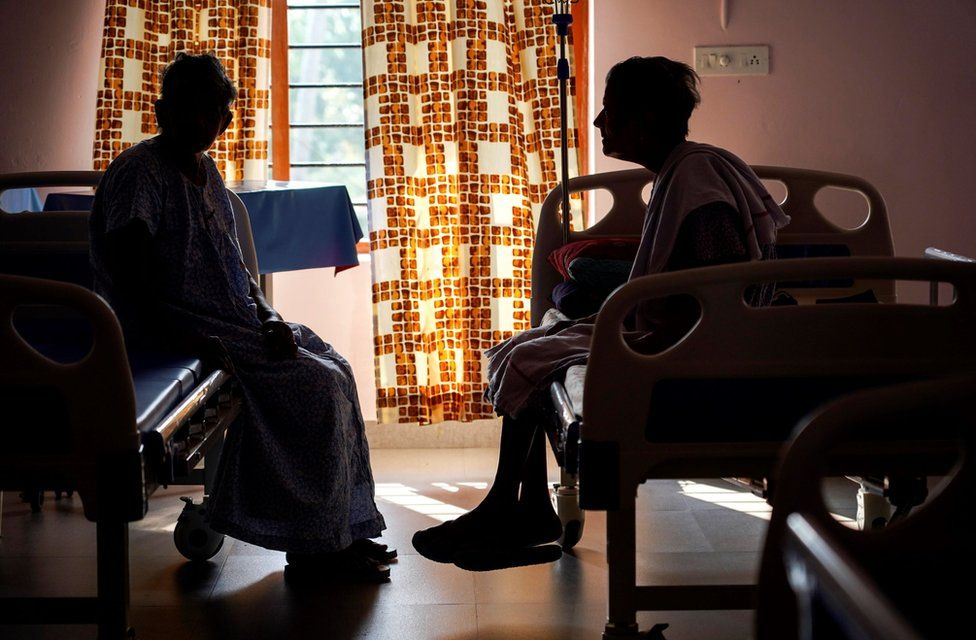
“Old age is the only problem here,” said Father Thomas John, who runs a geriatric centre in Kumbanad.
The town has three wheelchair accessible old-age homes with open spaces, wide doorways and hallways. The Alexander Marthoma Memorial Geriatric Centre, a five-storey building alongside a 150-bed hospital, takes care of more than 100 locals, aged between 85 and 101. Almost all are bedridden, and their families pay 50,000 rupees every month for their care. Sometimes the children come and stay with them at the 16-year-old centre.
“Most of the children live abroad and have no option but to move the very old parents to old-age homes,” said Father John.
Not far away, the 75-year-old Dharmagiri Old Age Home houses 60 locals, all above 60 years of age. Last year there were 31 new admissions. There are separate buildings for men and women. The waiting list is growing: a new 30-room building that can accommodate 60 elders is coming up.
“Most of the women who stay with us are victims of cheating. Some of them have been abandoned by their families,” said Father KS Mathews, who runs the home.
The ailing elderly, old-age homes, labour shortages, migration of the young, declining population, ghost towns.
“This is a story of any demographic change. This will be the story of the whole of India, finally,” said Mr James.

Read more India stories on population from the BBC:

